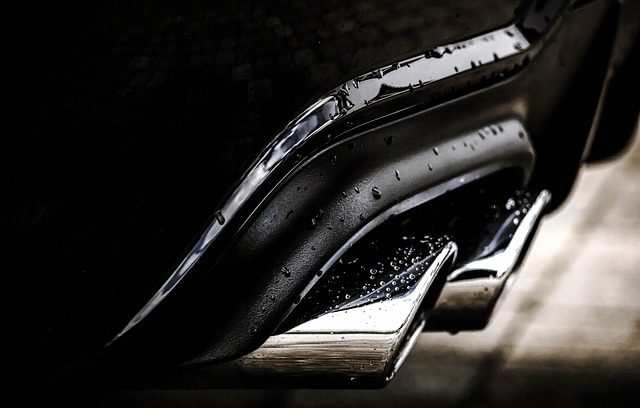Buy A New Car
Small Overlap Crash Test

The influx of all the amazing new electronic safety aids and crash avoidance systems found on-board new cars has been exceptional. There is no doubt that these systems are helping save lives and minimising injury. There has been one part of the latest car crash testing regime that the Insurance Institute for Highway Safety (IIHS) has brought in as part of their testing in order to help make cars safer.
The IIHS is an independent, non-profit scientific and educational organization dedicated to reducing deaths, injuries and property damage from motor vehicle crashes through their ongoing research and evaluation, and through the education of consumers, policymakers and safety professionals. The IIHS is funded by auto insurance companies and was established back in 1959. Its headquarters is in Arlington, Virginia, USA. A lot of what the IIHS does is crash test cars in a variety of ways to gather data, analyse the data, and observe the vehicles during and after the crash tests to quantify how safe each car is. The results and findings are published on their website at IIHS.org. Car manufacturers have been forced to take these tests seriously because, at the end of the day, these results matter and will affect car sales as the public become informed about how safe their cars will likely be in the event of an accident.
Since 2012, the IIHS has introduced a couple of new tests that they put the vehicles through to see how safe they are in an event of small overlap collision. The driver-side small overlap frontal test was brought about to help encourage further improvements in vehicle frontal crash protection. Keeping in mind that these IIHS tests are carried out using cars with left-hand-drive, the test is designed to replicate what happens when the front left corner of a vehicle collides with another vehicle or an object like a tree or utility pole. This crash test is a challenge for some safety belt and airbag designs because occupants move both forward and toward the side of the vehicle from the time of impact. In the driver-side small overlap frontal test, a vehicle travels at 40 mph (64 km/h) toward a 5-foot-tall rigid barrier. A Hybrid III dummy representing an average-size man is positioned in the driver seat. 25% percent of the total width of the vehicle strikes the barrier on the driver side.
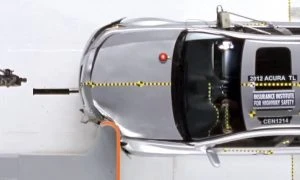
Most modern cars have safety cages encapsulating the occupant compartment and are built to withstand head-on collisions and moderate overlap frontal crashes with little deformation. At the same time, crush zones help manage crash energy to reduce forces on the occupant compartment. The main crush-zone structures are concentrated in the middle 50% of the front end. When a crash involves these structures, the occupant compartment is protected from intrusion, and front airbags and safety belts can effectively restrain and protect occupants.
However, the small overlap frontal crashes primarily affect a vehicle’s outer edges, which aren’t well protected by the crush-zone structures. Crash forces go directly into the front wheel, the suspension system and the firewall. It is not uncommon for the wheel to be forced rearward into the footwell, contributing to even more intrusion into the occupant compartment, which often results in serious leg and foot injuries. To provide effective protection in these small overlap crashes, the safety cage needs to resist crash forces that haven’t been amplified, concentrated on one area or aren’t tempered by crush-zone structures. Widening these front-end crash protection structures does help.
The IIHS also performs the passenger-side small overlap frontal test. The passenger-side test is the same as the driver-side test, except the vehicle overlaps the barrier on the right side. In addition, instead of just one Hybrid III dummy, there are two — one in the driver seat and one in the passenger seat.

Automotive manufacturers initially responded to these driver-side small overlap test results by improving vehicle structures and airbags, and most vehicles now earn good ratings. However, IIHS research tests demonstrated that those improvements didn’t always carry over to the passenger side. Discrepancies between the left and right sides of vehicles spurred the IIHS to develop a passenger-side small overlap test and begin issuing passenger-side ratings in 2017.
It is good that vehicle safety always seems to be on the improve and, with each new model, the new-car buyer can expect a safer vehicle. Thanks to crash testers like the IIHS, ANCAP and Euro NCAP, we are experiencing safer cars on our roads.
Will Vehicle Carbon Taxes be Revisited?
A few years ago, there was talk of a proposed ‘carbon tax’ on new vehicles by slugging non-compliant auto makers with fines in an effort to reduce emissions. However, it became very clear that such a move would leave the door open for car manufacturers to pass on these fines to motorists in the form of increased car prices. In the meantime, alternative fuel technologies like hydrogen, electric vehicles and hybrids have failed to catch on, while phasing out of diesel and petrol vehicles has essentially been limited to offshore markets rather than here in Australia.
Even if such penalties were to be limited to non-compliant vehicle manufacturers that fail to meet stricter emissions standards, the result would have a flow-on effect across the new car market, effectively reducing the notion of a free market and any ‘true’ choice that motorists have when it comes to having access to the vehicle they want.
The real matter at hand
However, for all the focus on the technicalities of the ‘tax’, the real matter is how we manage the environmental burden from vehicles in an equitable manner. Or should we be content in punishing motorists for driving cars that are less fuel efficient than their peers?
Recent examples would suggest anything but. After all, take a look at states like Victoria, New South Wales and South Australia and it becomes immediately apparent that road usage charges for electric vehicles loom as a distinct risk that could threaten the uptake of electric vehicles. That is one example where an equitable manner has been sought to apply to the use of our roads, but there is no denying it is also ‘punishing’ the sort of behaviour that we are trying to promote.
Nonetheless, back to the original tax proposal, and in many respects, it never really stood a chance. In some quarters, the measures were tipped to start as early as next year, however, the reality is, Australia’s new car market continues to be defined by the very makes and models that would theoretically be punished for falling foul of emissions standards. With our love for SUVs and dual-cab utes, should Australians be locked out of some of their favourite cars by virtue of significantly higher prices as manufacturers seek to offset the hit to their hip-pocket?
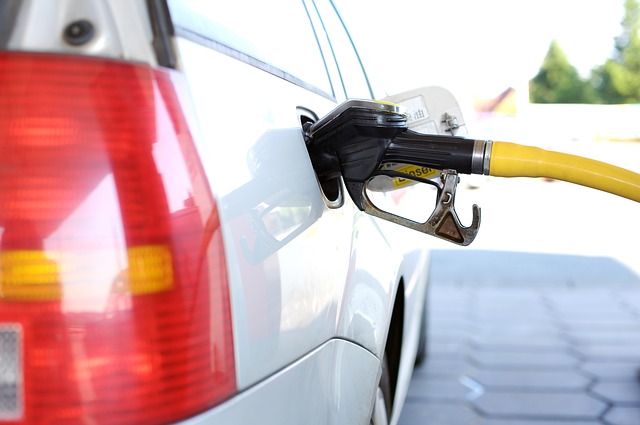
It’s also been stated a number of times that Australia often misses out on some of the ‘cleaner’ or more advanced iterations of certain vehicles from the European market due to the standards of our emissions and fuel quality. Again, however, costs are at the centre of the discussion here, and in a new car market that is finally seeing signs of life, would industry players want to potentially derail this when a number of supply-chain issues have already weighed on upwards momentum?
All up, however, we do have some reason to be concerned about motorists holding onto their vehicles for longer – in the process, increasing the average age of cars on our road. Not only does this serve little to stimulate the economy but it won’t do much to tackle emissions across the nation’s entire fleet.
Several years on, are we actually any closer to answering the question as to how we encourage auto-makers to step away from higher emissions vehicles? Down under, it doesn’t appear so.
Cars For “When you get to my age!”
“When you get to my age…” is a statement commonly made by those of us who may well be getting on in years. Older drivers will likely have more to consider when they come to buying themselves a new car. The need for lots of power may not be such a deciding factor either, and comfort and safety might be the attributes you’d be needing instead. It can also be a fun time buying the new car because you haven’t got all the family commitments to keep in the back of your mind, which would otherwise have swayed your choice of car in the past.
The list of new cars below has been put together with the ‘oldies’ in mind but it by no means is definitive. It is nice to have a practical car which will take the grandkids out to the park or off to the zoo, but these cars also have comfort, reliability, decent space, good safety features, easy infotainment technology and good climate controls. You’ll also find that the following cars are pretty economical and reasonably easy to get in and out of.
The Peugeot non-commercial range of cars are fine cars with style, comfort and practicality. They offer five-star safety and good pricing. Who says motoring has to be boring!
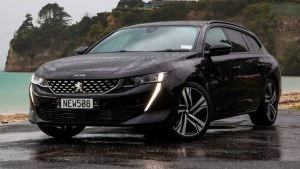
Peugeot 508 Wagon
Toyota’s Camry, Corolla, or RAV4 models are well-priced, safe, efficient and reliable. Lexus models are premium Toyota cars with lavish comfort, excellent reliability, economy and safety.
The Subaru Impreza or Forester are a good go to car for practicality. Maybe you have a dog or need comfort and AWD traction. Their efficiency, safety and reliability have always been good.
Volvo’s new S60, XC60 or XC40 are sensationally comfortable, safe and lovely to drive.

Volvo XC40
Mercedes Benz B-Class range are a great package for comfort and practicality. The style is hard to beat, and they also have the amazing big infotainment screens that wowed the world.
Honda Civic or Accord cars are hugely efficient, reliable and comfortable cars.
Citroen C3, C3 Aircross or C5 Aircross are remarkably comfortable, practical and look cool.
Hyundai Kona has electric power and comfort leading the way, with practicality to boot.
Jaguar’s XE is a lovely car with everything an ‘oldie’ could wish for.
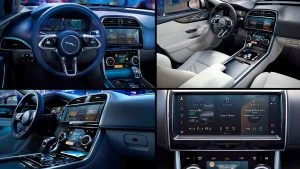
Jaguar XE
Renault has the Captur model range that provides classy SUV looks, outstanding comfort and safety, practicality and nice solid driving dynamics.
Skoda’s entire range of cars are comfortable, well-priced and spacious. Superb models are very stylish and they come in sedan and wagon. There is a model for everyone.
Nissan Qashqai and X-Trail variants are very comfortable, safe and practical; they also offer one of the better SUVs in AWD form with decent go anywhere ability.
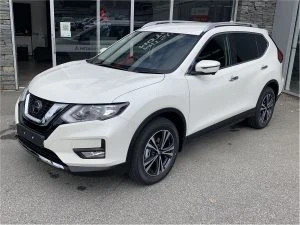
Nissan X-Trail
Kleva Kluger Is A Hefty Hybrid.
Toyota’s near twenty year old Kluger nameplate is joining the Toyota family of Hybrids. The big petrol powered machine, which has never had a diesel option, weighs in at a hefty two thousand kilos (dry) in its forthcoming Hybrid form. It will become the eighth Hybrid for the Japanese company.
The Kluger will come in 2WD or AWD petrol, or AWD Hybrid, and the Hybrid has the Toyota 2.5L petrol, whilst the Kluger stays with the familiar 3.5L V6 capacity in a new engine block. There willbe three trims levels, with the GX 2WD petrol starting from $47,650, the GXL 2WD petrol from $56,850, and Grande 2WD petrol from $68,900. Move to AWD and pricing runs at: GX AWD petrol from $51,650,
GXL AWD petrol from $60,850, and Grande AWD petrol from $72,900. The Hybrid range starts from $54,150 for the GX AWD hybrid, $63,350 for the GXL AWD hybrid, and $75,400 for the Grande AWD hybrid. Premium paint is a $675 option, with the Grande offering a rear seat entertainment system at $1,500. Sean Hanley, the Toyota Australia Vice President Sales and Marketing, said the addition of a hybrid option to one of Australia’s favourite family SUVs demonstrated Toyota’s commitment to driving sustainability forward. “The popularity of SUVs continues to grow and the new Kluger hybrid models mean that families can have all the space, comfort, refinement and versatility of a large SUV with a low environmental impact. In addition to that, the stylish new look, improved safety and high level of advanced technology makes the Kluger the perfect SUV for the modern family.
Sean Hanley, the Toyota Australia Vice President Sales and Marketing, said the addition of a hybrid option to one of Australia’s favourite family SUVs demonstrated Toyota’s commitment to driving sustainability forward. “The popularity of SUVs continues to grow and the new Kluger hybrid models mean that families can have all the space, comfort, refinement and versatility of a large SUV with a low environmental impact. In addition to that, the stylish new look, improved safety and high level of advanced technology makes the Kluger the perfect SUV for the modern family. Power comes from the 2.5L four and a pair of electric motors up front, backed by a single rear mounted engine. Toyota says the Hybrid’s combined power is 184kW, with the petrol engine contributing 142kW itself. Torque isn’t quoted for the Hybrid, however 242Nm is the 2.5L petrol engine’s figure and emissions of 128g/km. Jump to the 3.5L and 218kW is backed by 350Nm with drive being passed through a new eight speed auto.
Power comes from the 2.5L four and a pair of electric motors up front, backed by a single rear mounted engine. Toyota says the Hybrid’s combined power is 184kW, with the petrol engine contributing 142kW itself. Torque isn’t quoted for the Hybrid, however 242Nm is the 2.5L petrol engine’s figure and emissions of 128g/km. Jump to the 3.5L and 218kW is backed by 350Nm with drive being passed through a new eight speed auto.
The Hybrid has an electronic continuously variable transmission (e-CVT). The e-Four AWD system allows up to 100 per cent of drive to be sent through the front wheels or up to 80 per cent through the rear, depending on the conditions being driven in. This Dynamic Torque Control AWD system, which effectively disconnects the rear diff when AWD isn’t required, will be available in the GX and GXL. The Grande also receives a torque vectoring system, splitting torque to left or right as required. There will be three driving modes too, with Eco, Normal, and Sport offering a breadth of choice. Also included in the AWD models is a terrain adjustable program for Rock and Dirt, Mud and Sand soft-roading. Underneath the wheelhouse, the new Kluger is built on an updated chassis, called Toyota New Global Architecture or TNGA platform. The wheelbase is increased by 60mm longer wheelbase as is the overall length. It’s also somewhat broader than the current 2021 model for more interior room and stability on road. The suspension has been redesigned with multilink front and rear setups, with better overall ride quality, better handling, and better behaviour under braking conditions. Bigger discs at 340mm front and 338mm add their presence.
Underneath the wheelhouse, the new Kluger is built on an updated chassis, called Toyota New Global Architecture or TNGA platform. The wheelbase is increased by 60mm longer wheelbase as is the overall length. It’s also somewhat broader than the current 2021 model for more interior room and stability on road. The suspension has been redesigned with multilink front and rear setups, with better overall ride quality, better handling, and better behaviour under braking conditions. Bigger discs at 340mm front and 338mm add their presence.
An exterior revamp sees a lessening of the heavily squared-jaw look, with slim LED headlights and taillights, with the front fenders rolling inwards slightly at the top for a visual weight reduction. There is a new line for the rear wheel arches, with a sinuous curve rolling up from the doors that reminds of the current IndyCar rear structure. Wheels themselves will be 18 inch alloys on the GX and GXL, and bespoke Chromtec 20 inch alloys for the Grande. The increase in space means increased comfort and Toyota adds in sliding and 60/40 split centre row seats, with the seven seater having 60/40 split fold also. Trim material finish has gone up a grade with soft touch dash materials, a higher quality cloth trim in the GX, and faux leather for the GXL. That grade also has gained heated front pews. GX and GXL have an 8.0 inch touchscreen, Android and Apple compatibility with DAB and Bluetooth, plus satnav for the GXL along with tri-zone climate control. Grande adds in a sunroof, HUD, and an 11 speaker audio system from JBL.
The increase in space means increased comfort and Toyota adds in sliding and 60/40 split centre row seats, with the seven seater having 60/40 split fold also. Trim material finish has gone up a grade with soft touch dash materials, a higher quality cloth trim in the GX, and faux leather for the GXL. That grade also has gained heated front pews. GX and GXL have an 8.0 inch touchscreen, Android and Apple compatibility with DAB and Bluetooth, plus satnav for the GXL along with tri-zone climate control. Grande adds in a sunroof, HUD, and an 11 speaker audio system from JBL.
GX has dual zone, auto headlights and rain-sensing wipers as standard. Five USB ports make for family friendly smart usage. The increased wheelbase adds up to increase the cargo and third row space as well. Also upped is safety, with Toyota’s Safety Sense gaining traffic sign recognition, intersection turn assist, and emergency steering assist across the three, backing up the already substantial safety package.
The current expected release date for Australia is June.
